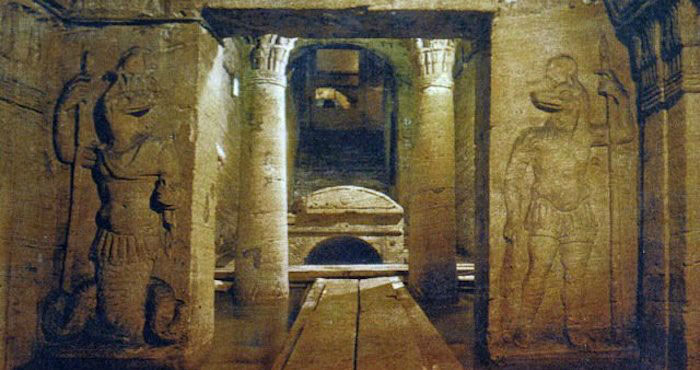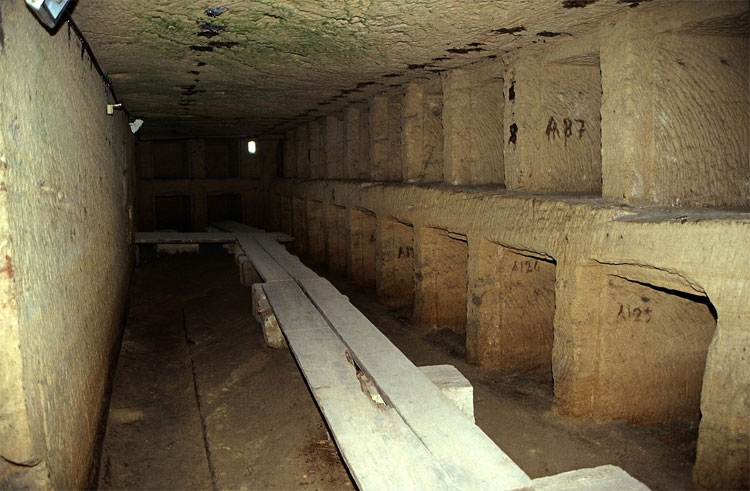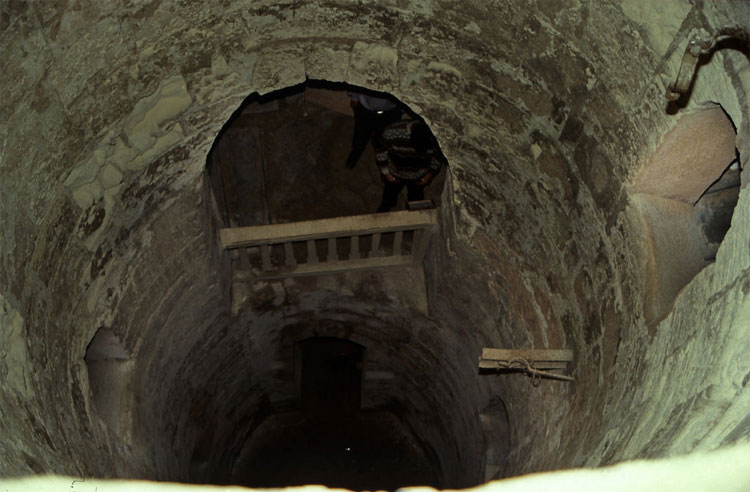The con man found out about a thousand-year-old tomb
While scientists have spent a lot of effort, even a lifetime, to find a historical site, this thousand-year-old tomb is discovered by . a donkey.
Referring to ancient Egypt, many people will think of pyramids, sphinxes or mummies. However, attached to Egyptian history there are legends, difficult to answer secrets or even wonders are still waiting to be discovered.Kom el Shoqafa's grave site is a good example. The story of how the thousand-year-old tomb was discovered also made people say "Unbelievable!".

Kom el Shoqafa was named one of the 7 Wonders of the Middle Ages.
According to legend, Kom el Shoqafa's tomb was lost and unable to find it. But the reality has changed completely thanks to a donkey.
The story is told that a donkey walked through this area and unfortunately fell down, so that people discovered this forgotten tomb.

Kom el Shoqafa is like a 3-storey maze, 30m deep, with tombs containing many stone sarcophagi and Egyptian-style statues.
Local records did not initially mention this great public donkey. According to records, in 1900, Es-Sayed Aly Gibarah reported that he had discovered a crypt for a local museum. He said that while digging a rock near the area and seeing the sign of the tomb.
Kom el Shoqafa's grave site is the largest burial site ever discovered from the Greek-Roman period. What makes the discovery of special tombs more than artifacts from different cultures is found in them.

Kom el Shoqafa tombs are believed to have been used in the 2nd century AD.

The tomb is named Kom el Shoqafa, from the ancient Greeks.
One of the important findings is about Alexandria history . When Alexander the Great founded the city of 331 BC, this was the first time that Greek and Egyptian culture began to co-exist. The city becomes a sophisticated learning, cultural and artistic center. The tradition of cultural sharing continued when the Romans conquered the city in 30 BC.
Kom el Shoqafa tombs are believed to have been used in the 2nd century AD. Almost no other places on Earth represent a combination of influences of Egypt, Greece and Rome. Therefore, the discovery of this tomb became an important event in archeology.
The tomb is named Kom el Shoqafa, from the ancient Greeks. It is translated as "rubble". When it was first built, Kom el Shoqafa could very well be just a grave for a family. However, over time, many others have also been buried here forming a system of large tombs.

Inside the crypt.

The crypt area was discovered, opening the door to discover ancient history for the world.
Archaeologists believe that Kom el Shoqafa was once a large funeral chapel on the surface of the crypt. However, over time, the construction works on the surface have been broken and unable to further study their architecture.
Fortunately, the underground part of the crypt is one of the best preserved burial places in Egypt. What makes it so special is the unique blend of cultures. This is also part of why the crypt is called one of the seven wonders of the Middle Ages.
The retelling stories have been verified more specifically. Indeed a donkey has brought mankind to this great discovery. From there, open the door to discover ancient history for the world.
- Found a thousand-year-old beef soup in a tomb
- Discovered a thousand-year-old wine in China
- The secret of an ancient tomb is 800 years old in China
- The incredible truth behind the lamp
- The mystery of the weapons inside the tomb of Qin Shihuang - thousand years is still sharp
- 2,000-year-old tomb in Mexico
- Thousand-year sphinx statue in the tomb of Tang Dynasty
- Excavation of 800-year-old tomb, unexpectedly discovered precious treasures
- Scary discovery about 1,400-year-old 'tomb of ghosts'
- Found soup 2,400 years old
- Each year, 85 thousand tons of grease, chemicals and metals are released into the sea
- Discovered a 4,400-year-old tomb in Egypt
 Discovered an ancient centipede fossil 99 million years old
Discovered an ancient centipede fossil 99 million years old Discovered bat-like dinosaurs in China
Discovered bat-like dinosaurs in China Discovered a 200-year-old bronze cannon of the coast
Discovered a 200-year-old bronze cannon of the coast Discover 305 million-year-old spider fossils
Discover 305 million-year-old spider fossils